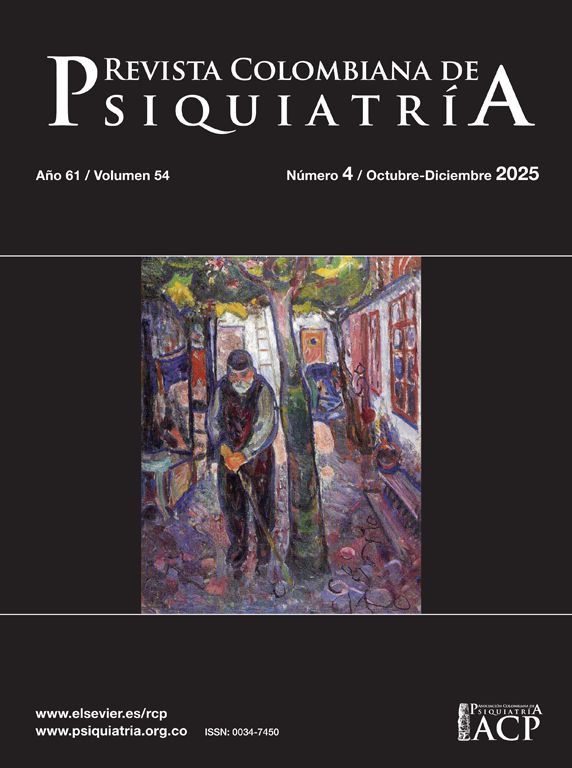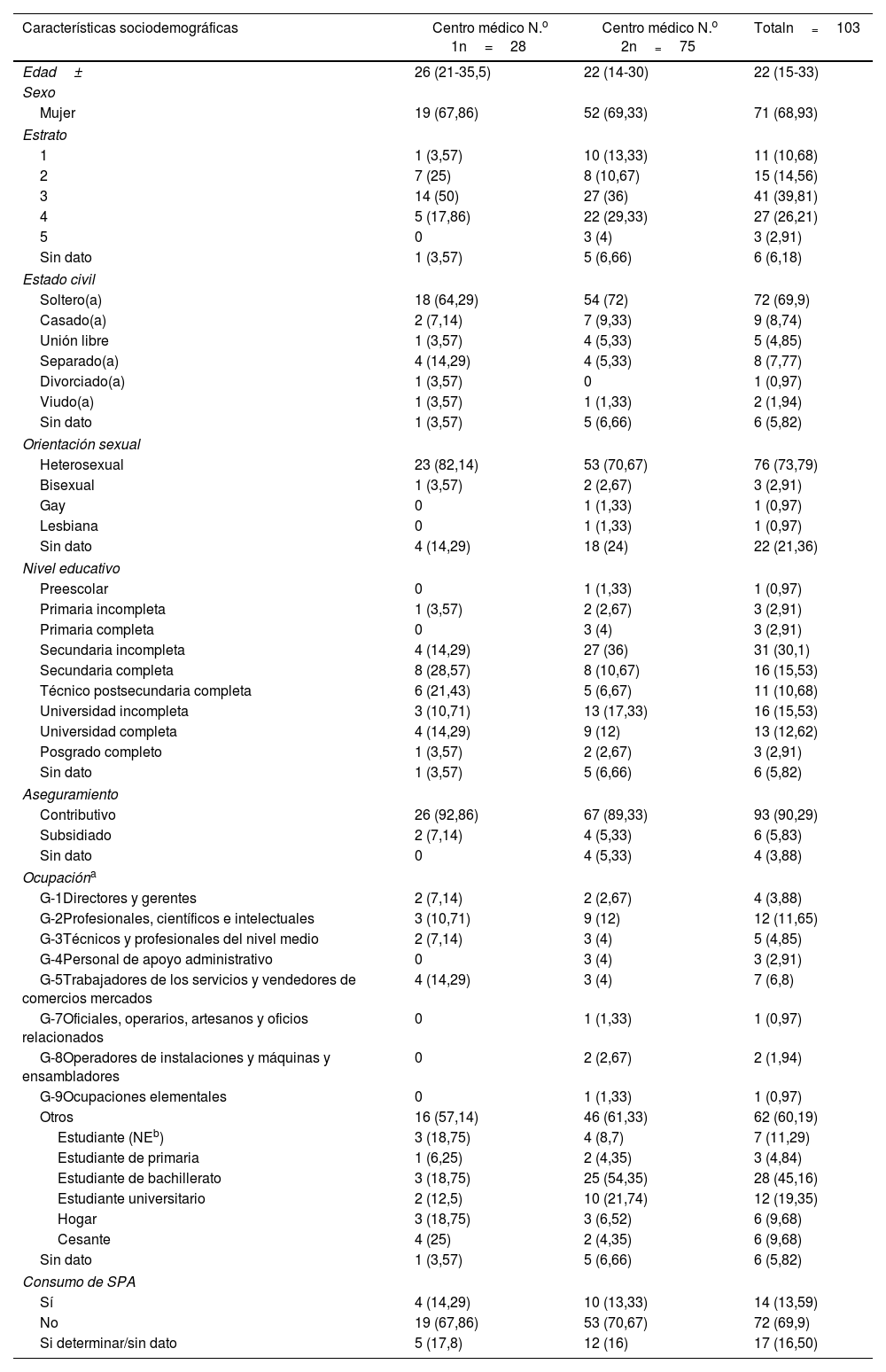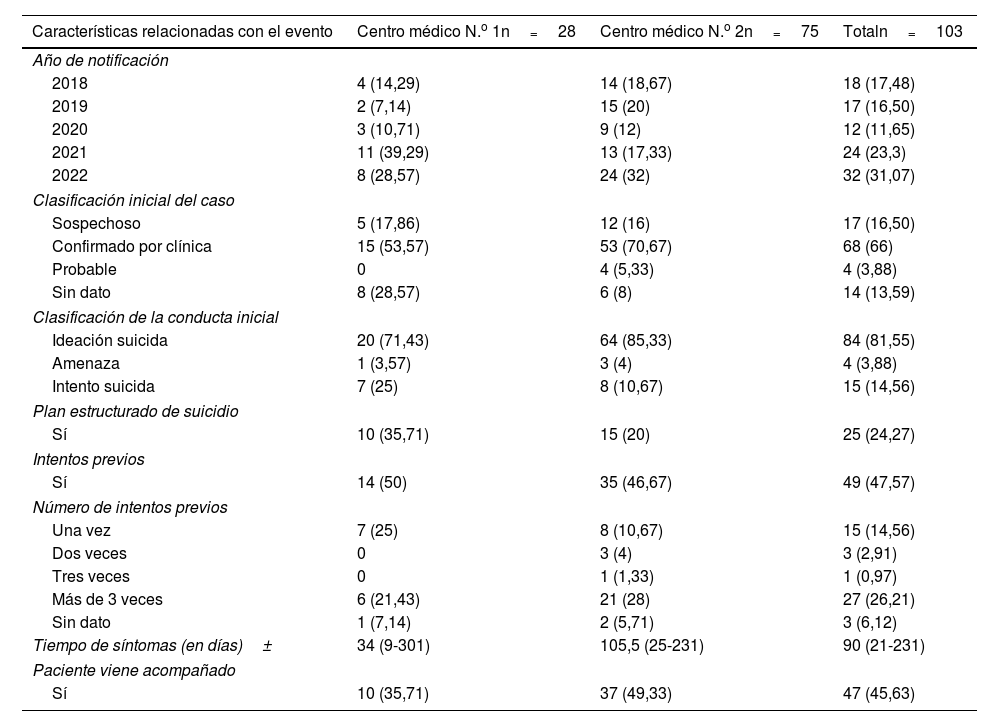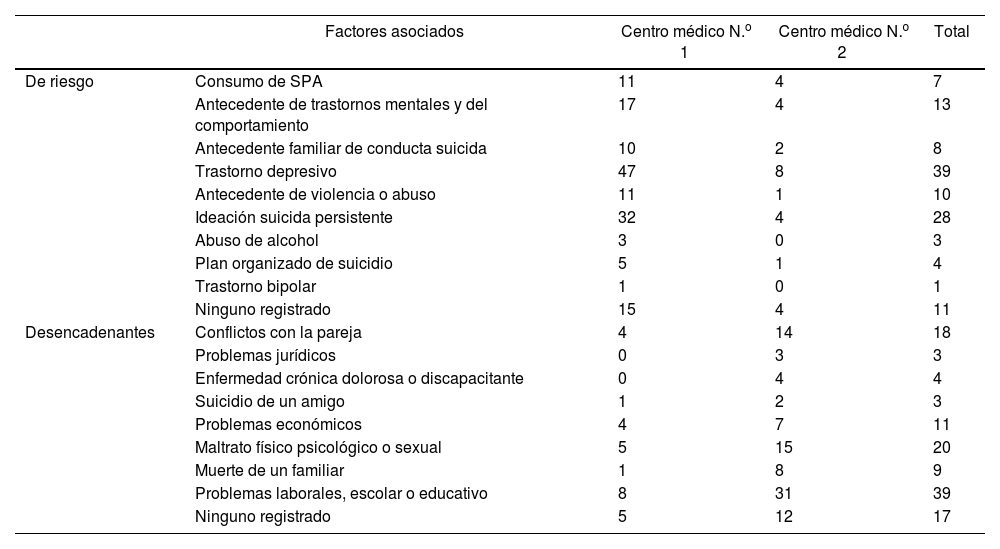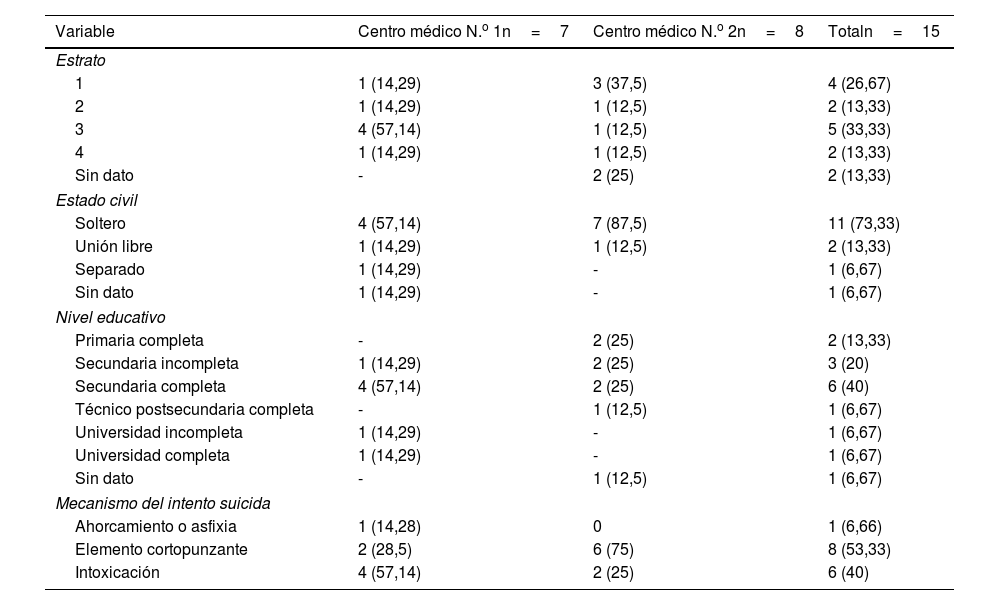La conducta suicida es el espectro de eventos que pueden o no conllevar suicidio; aproximadamente, una persona comete suicido cada 40 segundos en el mundo. Entender el perfil clínico y sociodemográfico de esta conducta es vital para generar rutas anticipatorias u otras medidas preventivas por parte de los prestadores de salud.
ObjetivosIdentificar el perfil clínico y social de la población con conducta suicida y estimar la frecuencia del evento en dos centros médicos de atención primaria.
Materiales y métodosEstudio de corte transversal descriptivo basado en registros de notificación SISVECOS diligenciados en dos centros médicos de Javesalud en Bogotá. Se usaron frecuencias absolutas y relativas o medidas de tendencia central y dispersión según la naturaleza de las variables; la frecuencia se estimó con base a la población anualmente asignada a los centros médicos. La recolección y protección de datos se realizó en REDCap y el análisis estadístico en STATA 18.
ResultadosSe identificaron 103 fichas, 28 en el centro médico N.o 1 y 75 en el centro médico N.o 2. Un total de 71 casos fueron mujeres y 15 eventos fueron catalogados como intento suicida. El año 2022 fue en el que se reportaron más casos (8) y tuvo la mayor incidencia (8,9/100.000).
ConclusiónEste estudio aporta el perfil de riesgo en conducta suicida y estima la frecuencia del evento en un escenario de atención primaria.
Suicidal behavior is the spectrum of events that may or may not lead to suicide, approximately 1 person commits suicide every 40seconds worldwide. Understanding the clinical and sociodemographic profile of this behavior is vital to generate anticipatory routes or other preventive measures by health care providers.
ObjectivesIdentify the clinical and social profile of the population with suicidal behavior and estimate the frequency of the event in two primary care medical centers.
Materials and methodsA descriptive cross-sectional study based on SISVECOS notification records completed at two medical centers of Javesalud in Bogotá. Absolute and relative frequencies or measures of central tendency and dispersion were used depending on the nature of the variables; frequency was estimated based on the population annually assigned to the medical centers. Data collection and protection were conducted in REDCap and statistical analysis in STATA 18.
ResultsA total of 103 records were identified, 28 at medical center No.1 and 75 at medical center No.2. Of these, 71 cases were women and 15 events were classified as suicide attempts. The year 2022 had the highest number of cases reported (8) and the highest incidence rate (8.9/100,000).
ConclusionThis study provides the risk profile of suicidal behavior and estimates the frequency of the event in a primary care setting.



